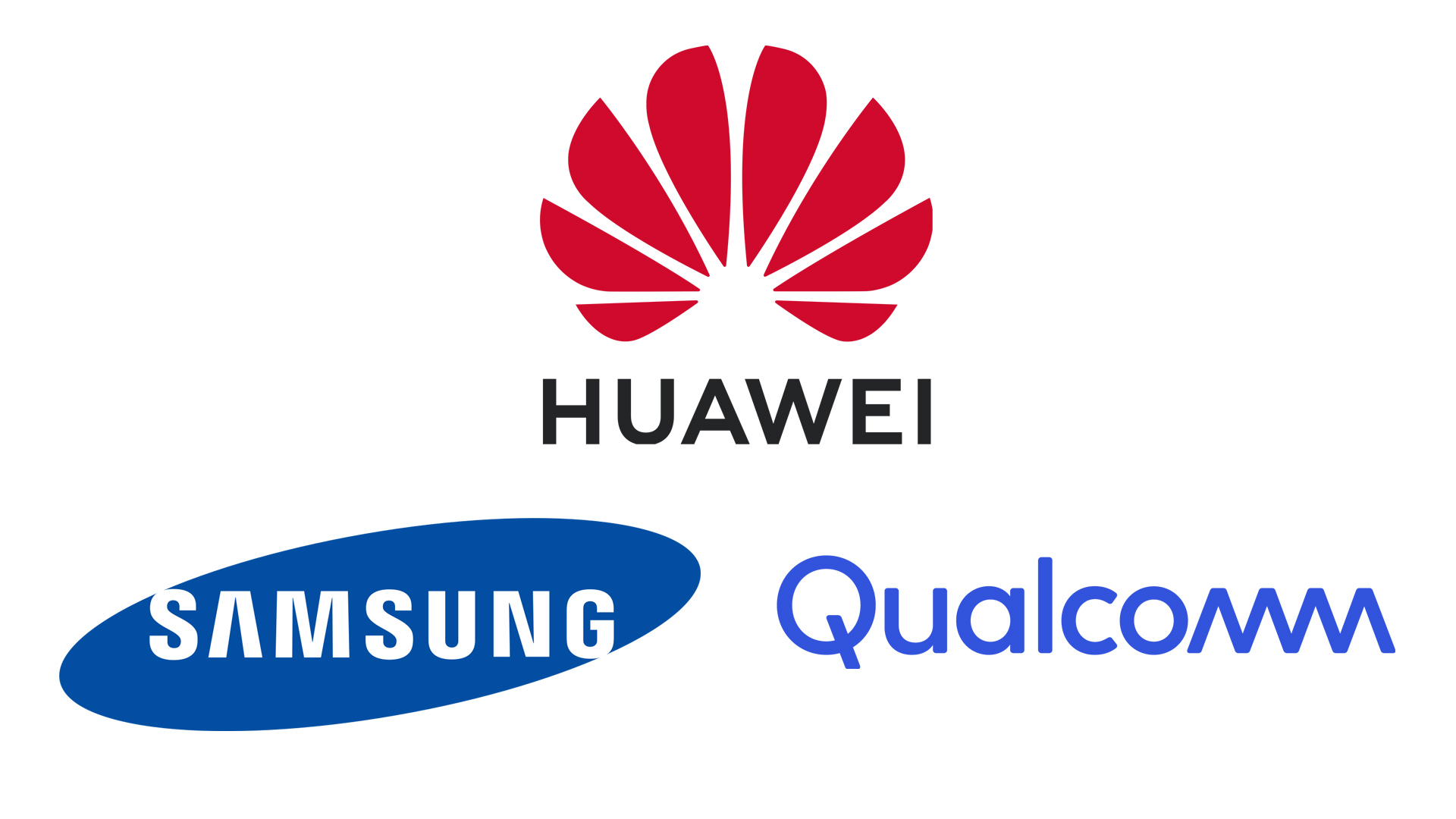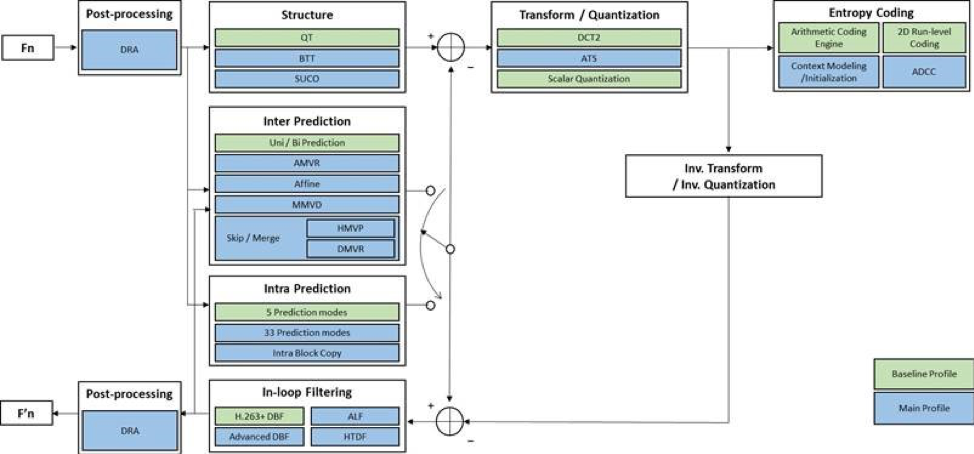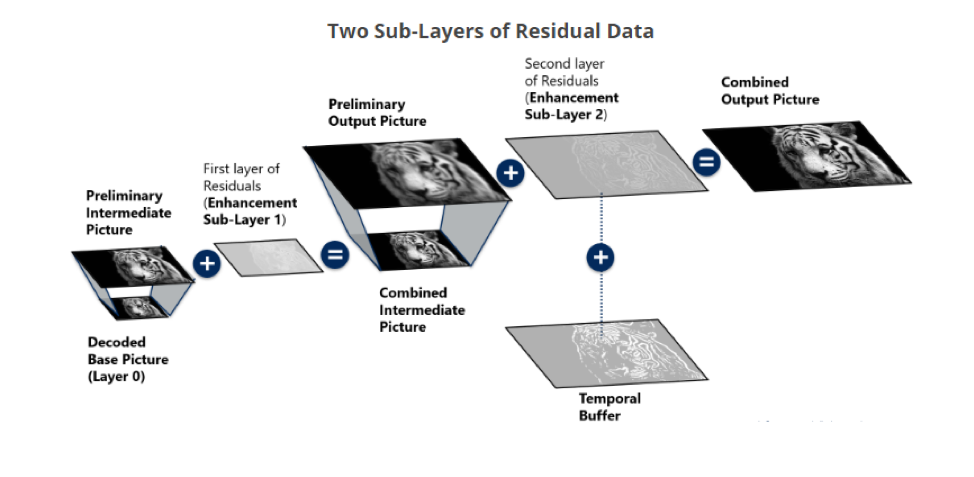
New codecs are on their way, making for much more efficient delivery of the latest high resolution video formats.

This is an interesting time for video codec development as several new ones are moving toward finalization and/or commercial roll out. All are reactions to, successors of, or complementary to the current MPEG flagship codec: HEVC. One of them, Essential Video Coding (EVC or MPEG-5), recently moved to Final Draft International Standard (FDIS) in the last MPEG meeting. This codec is expected to be useful for the delivery of 4K, 8K, VR, AR and HDR content.
EVC has two big things going for it:
- It has no or reduced royalty issues vs. HEVC
- Lower bit rates vs. AVC or HEVC
EVC is a codec that is being pushed forward by Samsung Electronics Co., Huawei Technologies Co., and Qualcomm Incorporated. It offers two important profiles: Baseline and Main. The Baseline profile contains only technologies that are older than 20 years or otherwise freely available for use in the standard. The Main profile adds a small number of additional tools, each of which can be either cleanly disabled or switched to the corresponding baseline tool on an individual basis.
No royalties
The Baseline profile is very appealing for some operators as there are no royalties involved but the Main profile will offer greater compression efficiency. According to Ken McCann, the Director and co-founder of ZetaCast, a technology consultancy company specialising in digital TV, and Chairman of MPEG Ad hoc Group on EVC, “I expect that it will be the Main profile that is chosen in practice (assuming that the licensing fees are reasonable).”
Holders of essential patents that cover the EVC standard are expected to provide commercially useful disclosure of applicable licensing terms. According to the requirement of the standard, all the contributors of the standard are expected to make the timely publication of applicable licensing terms within two years of the FDIS stage either individually or as part of a patent pool. That means the clock has started but hopefully EVC will roll out well before two years from now.
One of clear reasons why EVC is emerging is the complex licensing structure for HEVC which means it has not gained the widespread adoption that previous MPEG coding standards have. The big three behind EVC have stated they intend to offer fair, reasonable, and non-discriminatory terms for their IP.
EVC can be used in any distribution pipeline such as 5G or cable networks to speed delivery of advanced video services. Of course, playback devices will need to be able to decode EVC and there have been no announcements on this front yet. However, it seems likely that mobile and TV devices will soon support EVC considering who is pushing EVC forward.
Benefits of the new compression
So, what benefits will it offer in compression efficiency? “The bitrates will be very dependent on the nature of the content and the target video quality,” noted McCann. “Roughly speaking, for the same video quality (based on PSNR) the bitrates required for the Baseline profile will be about 30% less than H.264/AVC, whilst the bitrates required for the Main profile will be about 30% less than for HEVC. We expect this to improve to 40% for both profiles.”
The principal tools included in each of the profiles are summarised in the diagram below.

Simultaneously, the Versatile Video Coding (VVC) codec and Low Complexity Enhancement Video Coding (LCEVC) are also moving toward standardization within MPEG. And, AV-1, the royalty-free video codec developed by the consortium called the Alliance for Open Media (AOM) is already starting to roll out (recently Sisvel has surfaced IP claims on AV-1 so it may not remain royalty free). Content up to 8K in resolution now available on YouTube and playable on mobile and TV devices.
VVC is the successor to HEVC which hopes to provide a 50% improvement in compression efficiency compared to HEVC (currently at 40%) but will have a full slate of IP associated with it (and unclear licensing terms).
Processing power requirements
One of the concerns with HEVC, VVC and AV-1 is the processing power and time needed to encode video. Both have gone up significantly in order to provide better compression efficiency – something not all operators find acceptable.
The response has been LCEVC (MPEG-5 Part2), which is being pushed forward by V-Nova and should not be confused with EVC as discussed above. LCEVC is not a new codec, but a processing enhancement that can work with any established codec (AVC, EVC, HEVC, AV-1, etc.).
LCEVC specifies a two-component stream. One is a base layer stream decodable by hardware with a second enhancement stream suitable for software processing. This enhancement layer works with the existing codecs to lower coding and decoding complexity. It corrects artifacts created by the base layer encoding and adds detail and sharpness to the output video.

Data from the LCEVC web site suggests a 2.7x improvement in encoding time vs. HEVC and a 4.8x improvement vs. VVC.
As stated up front, this is an exciting time for codec development as new and bandwidth intensive video services are coming. It will be fun to see how this all plays out.
Tags: Technology

Comments